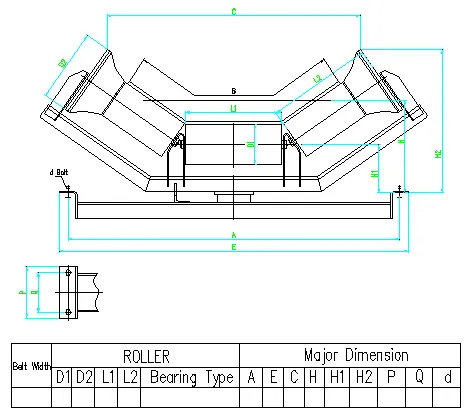 Afrikaans
Afrikaans  Albanian
Albanian  Amharic
Amharic  Arabic
Arabic  Armenian
Armenian  Azerbaijani
Azerbaijani  Basque
Basque  Belarusian
Belarusian  Bengali
Bengali  Bosnian
Bosnian  Bulgarian
Bulgarian  Catalan
Catalan  Cebuano
Cebuano  Corsican
Corsican  Croatian
Croatian  Czech
Czech  Danish
Danish  Dutch
Dutch  English
English  Esperanto
Esperanto  Estonian
Estonian  Finnish
Finnish  French
French  Frisian
Frisian  Galician
Galician  Georgian
Georgian  German
German  Greek
Greek  Gujarati
Gujarati  Haitian Creole
Haitian Creole  hausa
hausa  hawaiian
hawaiian  Hebrew
Hebrew  Hindi
Hindi  Miao
Miao  Hungarian
Hungarian  Icelandic
Icelandic  igbo
igbo  Indonesian
Indonesian  irish
irish  Italian
Italian  Japanese
Japanese  Javanese
Javanese  Kannada
Kannada  kazakh
kazakh  Khmer
Khmer  Rwandese
Rwandese  Korean
Korean  Kurdish
Kurdish  Kyrgyz
Kyrgyz  Lao
Lao  Latin
Latin  Latvian
Latvian  Lithuanian
Lithuanian  Luxembourgish
Luxembourgish  Macedonian
Macedonian  Malgashi
Malgashi  Malay
Malay  Malayalam
Malayalam  Maltese
Maltese  Maori
Maori  Marathi
Marathi  Mongolian
Mongolian  Myanmar
Myanmar  Nepali
Nepali  Norwegian
Norwegian  Norwegian
Norwegian  Occitan
Occitan  Pashto
Pashto  Persian
Persian  Polish
Polish  Portuguese
Portuguese  Punjabi
Punjabi  Romanian
Romanian  Russian
Russian  Samoan
Samoan  Scottish Gaelic
Scottish Gaelic  Serbian
Serbian  Sesotho
Sesotho  Shona
Shona  Sindhi
Sindhi  Sinhala
Sinhala  Slovak
Slovak  Slovenian
Slovenian  Somali
Somali  Spanish
Spanish  Sundanese
Sundanese  Swahili
Swahili  Swedish
Swedish  Tagalog
Tagalog  Tajik
Tajik  Tamil
Tamil  Tatar
Tatar  Telugu
Telugu  Thai
Thai  Turkish
Turkish  Turkmen
Turkmen  Ukrainian
Ukrainian  Urdu
Urdu  Uighur
Uighur  Uzbek
Uzbek  Vietnamese
Vietnamese  Welsh
Welsh  Bantu
Bantu  Yiddish
Yiddish  Yoruba
Yoruba  Zulu
Zulu Feb . 15, 2025 12:11
Back to list
chevron wing pulley
The chevron wing pulley, an integral component in modern conveyor systems, serves as a cornerstone in improving material handling efficiency. With its distinctive V-shaped pattern, it offers more than just a visual appeal; it provides significant performance advantages that businesses across various sectors can leverage for operational efficiency.
In industries such as mining, agriculture, and bulk material handling, where heavy-duty belt conveyors are standard, these pulleys are invaluable. They perform under rigorous conditions while reducing the operational costs associated with wear and tear. For example, in mining operations where conveyors run continuously, the robustness and reliability of chevron wing pulleys can significantly extend the lifespan of the conveyance system, translating to substantial cost savings. The authority of the chevron wing pulley market is also evident in its compliance with industry standards. Such compliance ensures that the pulleys meet specific quality and durability benchmarks, eliminating risks associated with substandard components. Users can trust the performance outcomes promised by reputable manufacturers who adhere to these guidelines. Trust is further cemented by field data that exhibit significant reduction in maintenance costs and improved efficiency metrics when chevron wing pulleys are implemented in conveyor systems. In conclusion, the chevron wing pulley stands out as a testament to engineering innovation, marrying design and functionality to solve traditional material handling challenges. Its application is a strategic decision for companies aiming for reduced operational costs and sustained efficiency. For stakeholders looking to optimize their conveyor systems, choosing a reliable and well-engineered chevron wing pulley is as much about enhancing immediate operational outcomes as it is about making a long-term investment in their company's infrastructure and productivity. The trustworthiness and proven expertise embodied in the chevron wing pulley offer assurance for businesses that require dependable performance from their conveyance systems.


In industries such as mining, agriculture, and bulk material handling, where heavy-duty belt conveyors are standard, these pulleys are invaluable. They perform under rigorous conditions while reducing the operational costs associated with wear and tear. For example, in mining operations where conveyors run continuously, the robustness and reliability of chevron wing pulleys can significantly extend the lifespan of the conveyance system, translating to substantial cost savings. The authority of the chevron wing pulley market is also evident in its compliance with industry standards. Such compliance ensures that the pulleys meet specific quality and durability benchmarks, eliminating risks associated with substandard components. Users can trust the performance outcomes promised by reputable manufacturers who adhere to these guidelines. Trust is further cemented by field data that exhibit significant reduction in maintenance costs and improved efficiency metrics when chevron wing pulleys are implemented in conveyor systems. In conclusion, the chevron wing pulley stands out as a testament to engineering innovation, marrying design and functionality to solve traditional material handling challenges. Its application is a strategic decision for companies aiming for reduced operational costs and sustained efficiency. For stakeholders looking to optimize their conveyor systems, choosing a reliable and well-engineered chevron wing pulley is as much about enhancing immediate operational outcomes as it is about making a long-term investment in their company's infrastructure and productivity. The trustworthiness and proven expertise embodied in the chevron wing pulley offer assurance for businesses that require dependable performance from their conveyance systems.
Latest news
-
Revolutionizing Conveyor Reliability with Advanced Rubber Lagging PulleysNewsJul.22,2025
-
Powering Precision and Durability with Expert Manufacturers of Conveyor ComponentsNewsJul.22,2025
-
Optimizing Conveyor Systems with Advanced Conveyor AccessoriesNewsJul.22,2025
-
Maximize Conveyor Efficiency with Quality Conveyor Idler PulleysNewsJul.22,2025
-
Future-Proof Your Conveyor System with High-Performance Polyurethane RollerNewsJul.22,2025
-
Driving Efficiency Forward with Quality Idlers and RollersNewsJul.22,2025
OUR PRODUCTS





























